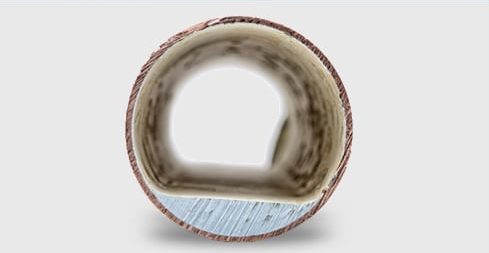Innovating Our Solutions and Our Website. As we introduce new solutions to better meet your needs, we’re also rolling out a new and improved website. Thank you for your patience during this time.
Why the Industry Doesn’t Want You To See Inside Your Lined Pipes.
What is Pipe Lining?
Pipe lining is often viewed as an alternative to “repiping” (installation of new piping to replace old or defective piping) for multifamily apartment and condominium communities. The lining process involves coating the pipes from the inside (or for drain lines installing a “pipe within a pipe”), supposedly creating a long-lasting and maintenance-free solution that solves pipe leaks.
Despite manufacturers’ and installers’ claims, however, the challenges with pipe lining solutions are both real and numerous, and the results of pipe lining may be less than desirable
Piping Systems in Multifamily Properties
There are multiple piping systems in a residential multifamily property, including supply pipes that bring drinking water into the building, and, drain, waste and vent pipes that carry waste water out of the building; depending on the heating and cooling system configuration, some buildings have hydronic HVAC pipes that connect boilers and chillers to radiators or fan coil units to heat and cool a property. Many people assume that these systems should last a lifetime, and because they are hidden behind walls and underground, they are frequently forgotten until there is a problem (or a series of ever-increasing problems). However, as buildings age, SageWater has found that these systems are in need of repair or replacement, and apartment community owners, property managers and condominium boards are looking for solutions.
Through extensive marketing efforts, the pipe lining industry has positioned itself as a viable alternative to repiping. However, mounting evidence is now calling into question the value proposition and long-term viability of these solutions, and stakeholders should be aware of the limitations and risks associated with pipe lining options.
Epoxy Pipe Lining Technologies
To explore the facts about pipe lining, we address the limitations of epoxy lining, a general term for a variety of plastic resins used in a variety of residential piping systems. We provide an overview of the technology, discussion of installation techniques and key considerations and limitations that should be considered.

